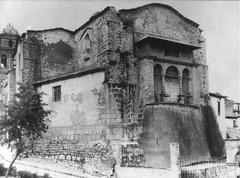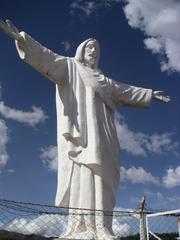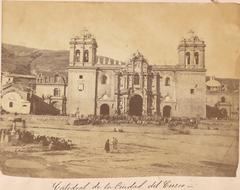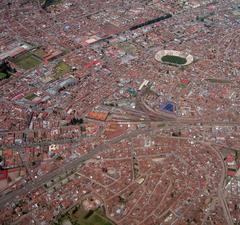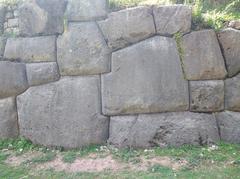Inkilltambo Visiting Hours, Tickets, and Cusco Historical Sites Guide
Date: 15/06/2025
Introduction: The Significance of Inkilltambo
Inkilltambo, nestled just northeast of Cusco, Peru, is a remarkable yet lesser-known archaeological site that offers an intimate window into the sophisticated engineering, spiritual depth, and cultural richness of the Inca Empire. Its Quechua name—inkill meaning “flower/garden” and tambo meaning “inn/resting place”—reflects its dual historical role as both a ceremonial sanctuary and a strategic waystation on the ancient Inca road network. Originally constructed during the reign of Inca Wiracocha (c. 1420–1438 CE) and later expanded by his son Pachacutec, Inkilltambo stands as a testament to the Incas’ ability to harmoniously blend advanced hydraulic systems, religious symbolism, and natural beauty in their architecture (auriperu.com; lorenzoexpeditions.com).
Unlike Cusco’s more frequented ruins, Inkilltambo remains a tranquil refuge, featuring intricately carved granite niches, agricultural terraces (andenes), and ceremonial water channels that highlight the Inca reverence for nature and water as sacred. Its location within the Sacsayhuaman Archaeological Park, overlooking the Cachimayo micro-watershed, gave it both strategic and spiritual prominence as part of the Inca ceque system of sacred lines radiating from Cusco (blog.lifexpeditions.com; trexperienceperu.com).
Today, Inkilltambo is open to the public free of charge, with daily visiting hours from 8:00 AM to 5:00 PM. It is easily accessible by taxi, hiking, or guided tour, and ongoing restoration ensures a safe and educational experience for those seeking to explore Cusco’s Andean heritage beyond the well-trodden paths (buhotours.com; tierrasvivas.com).
Guide Overview
- Introduction
- Origins and Historical Development
- Religious and Ceremonial Significance
- Social and Political Dimensions
- Decline, Rediscovery, and Modern Restoration
- Visiting Inkilltambo: Hours, Tickets, Access, and Tours
- Facilities, Safety, and Travel Tips
- Nearby Attractions
- FAQs
- Conclusion
Origins and Historical Development
Etymology and Early Function:
“Inkilltambo” combines Quechua words for “garden” and “inn.” This reflects its original use as both a sanctuary of natural beauty and a strategic stop along the Inca road network (auriperu.com; trexperienceperu.com). Chroniclers such as Santa Cruz Pachacuti and Bernabé Cobo record that Inkilltambo was first built under Inca Wiracocha during a period of imperial expansion (terandes.com; lorenzoexpeditions.com).
Architectural Evolution under Pachacutec:
Pachacutec, Wiracocha’s son, expanded Inkilltambo significantly, introducing refined stonework, ceremonial plazas, and advanced hydraulic systems, aligning the site with the Inca’s broader strategy of integrating religious, administrative, and agricultural functions at key locations (auriperu.com; lorenzoexpeditions.com).
Strategic Importance:
Situated at 3,548 meters above sea level and overlooking vital agricultural lands and water sources, Inkilltambo enabled the Incas to control movement and monitor production in the region (illapa.com; blog.lifexpeditions.com).
Religious and Ceremonial Significance
Huaca and Water Cult Center:
Inkilltambo functioned as a sacred huaca, featuring carved limestone outcrops, ceremonial plazas, and water channels used in rituals honoring water deities and fertility (trexperienceperu.com; lorenzoexpeditions.com).
Ceque System Integration:
The site formed part of the Inca ceque system—lines of sacred sites radiating from Cusco, structuring the empire’s religious and social life (lorenzoexpeditions.com).
Celestial Alignments:
Architectural studies suggest alignments with solstices and equinoxes, reinforcing the Inca worldview of cosmic harmony, with terraces and water channels symbolizing life cycles (kurakatravel.com).
Social and Political Dimensions
Royal Panaca and Administration:
Inkilltambo was managed by the Royal Panaca, the royal lineage of Pachacutec, and served as both a religious sanctuary and elite administrative center (terandes.com).
Agricultural Innovation:
The site’s expertly constructed terraces and irrigation systems supported high-altitude crop production, essential for both local sustenance and ceremonial gatherings (trexperienceperu.com; blog.lifexpeditions.com).
Decline, Rediscovery, and Modern Restoration
Post-Conquest Decline:
Following the Spanish conquest, Inkilltambo was neglected, with stones repurposed for colonial construction and the site’s religious functions suppressed (lorenzoexpeditions.com).
Restoration:
Restoration between 2015 and 2017 included rebuilding terraces, water channels, and walkways, and installing interpretive signage. These efforts have made Inkilltambo accessible, safe, and educational for visitors (heatherjasper.com).
Visiting Inkilltambo: Practical Information
Hours and Entry
- Opening Hours: Daily, 8:00 AM – 5:00 PM (buhotours.com).
- Entry Fee: Free of charge, no ticket required (buhotours.com; tierrasvivas.com).
Getting There
- By Taxi: 25–40 soles ($7–$11), 15–20 minutes from Cusco center.
- By Public Transport: Inka Express, Señor del Huerto, or buses toward Qenqo/Temple of the Moon for 1 sol ($0.30 USD).
- By Foot/Bike: Trails from Magisterio or San Blas; hike duration 2–4 hours; 13 km mountain biking circuit (buhotours.com; Inca Rail Blog).
- Tour Operators: Guided half-day tours often include stops at the Temple of the Moon and Rumi Wasi (Kondor Path Tours).
On-Site Facilities
- Restrooms: Limited/basic. Bring your own toilet paper.
- Food: No permanent vendors; bring snacks and water. At times, a small restaurant operates at the summit (Inca Rail Blog).
- Souvenirs: Occasional craft stalls.
- Camping: No official campsite; check local regulations for wild camping (Inca Rail Blog).
Accessibility
- Terrain is uneven and includes terraces and stairs; not wheelchair accessible.
- Suitable for most fitness levels, but challenging for those with mobility issues (Kondor Path Tours; buhotours.com).
Safety, Weather, and Practical Tips
- Altitude: 3,350–3,663 meters (10,990–12,017 feet); acclimatize in Cusco for 1–2 days before hiking (Kondor Path Tours).
- Weather: Best visited April–October (dry season); rainy season trails can be slippery (Inca Rail Blog).
- What to Bring: Hiking shoes, water, sunscreen, rain gear, cash, ID/passport.
- Safety: Site is generally safe, but hike with companions and inform someone of your route. Avoid isolated areas after dark (Kondor Path Tours).
- Responsible Tourism: Respect archaeological remains and local regulations.
Nearby Attractions
- Sacsayhuamán: Inca fortress with remarkable stonework.
- Qenqo: Ritual rock formations.
- Temple of the Moon: Site of fertility rituals.
- Rumi Wasi & Kallachaka: Additional ruins along hiking circuits (Half Digital Nomad; Kondor Path Tours).
Frequently Asked Questions (FAQ)
Q: What are the Inkilltambo visiting hours?
A: Open daily from 8:00 AM to 5:00 PM.
Q: Is there an entrance fee?
A: No, entry is free.
Q: How do I get there from Cusco?
A: By taxi, public transport, or hiking from neighborhoods like Magisterio or San Blas.
Q: Are guided tours available?
A: Yes, through local agencies and operators.
Q: Is Inkilltambo accessible for people with limited mobility?
A: The site involves uneven terrain and stairs; not recommended for those with significant mobility challenges.
Q: Can I bring pets?
A: Yes, Inkilltambo is pet-friendly (Tierras Vivas).
Visual Resources and SEO Tips
Enhance your visit by exploring online resources with high-quality images and interactive maps. Use descriptive alt tags such as “Inkilltambo archaeological site terraces” or “Inkilltambo visiting hours” to improve accessibility and SEO (machupicchu.org; peruvian-sunrise.com).
Summary and Recommendations
Inkilltambo is a unique chapter in the story of the Inca civilization, standing out for its ceremonial, agricultural, and strategic roles in the region. With free entry, daily visiting hours, and tranquil surroundings, it is ideal for travelers seeking a genuine experience of Andean heritage. Combine your visit with nearby sites like Sacsayhuamán and Qenqo for a deeper immersion into Cusco’s rich history (buhotours.com; machupicchu.org).
For the best experience:
- Acclimatize before visiting.
- Start your hike early in the day.
- Join a guided tour for in-depth context.
- Respect the site’s sacred and archaeological value.
Download the Audiala app for interactive guides, maps, and real-time travel tips. Follow us on social media for updates on restoration, events, and new travel stories.
Official Sources
- auriperu.com
- lorenzoexpeditions.com
- blog.lifexpeditions.com
- trexperienceperu.com
- buhotours.com
- blog.incarail.com
- tierrasvivas.com
- machupicchu.org
- peruvian-sunrise.com
- heatherjasper.com
- halfdigitalnomad.com
- kondorpathtours.com
